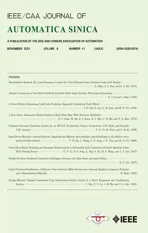A New Safety Assessment Method Based on Belief Rule Base With Attribute Reliability
2021-10-23ZhichaoFengWeiHeZhijieZhouXiaojunBanChanghuaHuandXiaoxiaHan
Zhichao Feng,Wei He,Zhijie Zhou,Xiaojun Ban,Changhua Hu,and Xiaoxia Han
Abstract—Safety assessment is one of important aspects in health management.In safety assessment for practical systems,three problems exist:lack of observation information,high system complexity and environment interference.Belief rule base with attribute reliability (BRB-r)is an expert system that provides a useful way for dealing with these three problems.In BRB-r,once the input information is unreliable,the reliability of belief rule is influenced,which further influences the accuracy of its output belief degree.On the other hand,when many system characteristics exist,the belief rule combination will explode in BRB-r,and the BRB-r based safety assessment model becomes too complicated to be applied.Thus,in this paper,to balance the complexity and accuracy of the safety assessment model,a new safety assessment model based on BRB-r with considering belief rule reliability is developed for the first time.In the developed model,a new calculation method of the belief rule reliability is proposed with considering both attribute reliability and global ignorance.Moreover,to reduce the influence of uncertainty of expert knowledge,an optimization model for the developed safety assessment model is constructed.A case study of safety assessment of liquefied natural gas (LNG)storage tank is conducted to illustrate the effectiveness of the new developed model.
I.INTRODUCTION
WITH the increasing complexity of practical system,the difficulty of health management increases.Safety assessment is one of important means to ensure the reliability of system and it is applied to prevent failure [1]–[4].
The safety assessment model applies multi-source observation information to estimate the safety state of complex system [5],[6].In the safety assessment for complex system,many excellent works have been conducted [7]–[11].For example,Ahmadiet al.[8] developed a safety assessment model based on data-driven model and a theorem of safety assessment is proposed,Syd Aliet al.[9] constructed a safety assessment framework based on fault tree analysis for automatic teller machine (ATM)system,Zhouet al.[10]proposed a hidden behavior prediction model for complex system based on belief rule base (BRB).
In safety assessment for practical systems,three problems exist.Firstly,due to the high cost of complex system,large amounts of observation data cannot be gathered,especially fault data [12],[13].Moreover,a complex system contains many subsystems and each subsystem is interrelated.Experts can provide some knowledge about the complex system [14].However,the expert knowledge is not enough to build accurate safety assessment model and the accuracy of the knowledge-based safety assessment is limited in practical system [12].Thirdly,influenced by disturbance in engineering practice,the gathered system information may not be fully reliable and noise exists in the information [15].When the unreliable system information is used in the safety assessment model,its modeling accuracy is decreased.The above three problems in practical systems pose challenges for safety assessment.Hence,the gathered unreliable observation data and the expert knowledge should both be applied.The BRB model is developed based on fuzzy theory,Dempster-Shafer theory and IF-THEN rule,which can handle uncertain,vague and incomplete information [14],[16]–[18].Then,the BRB model with attribute reliability (BRB-r)is proposed and it is a more general BRB model,where the attribute reliability is further considered [15].In the BRB-r model,the environment noise is addressed by attribute reliability.So,in this way,the BRB-r model provides an excellent framework to address the above three problems.Thus,in this paper,a safety assessment model is constructed based on BRB-r.
In the BRB-r model,the belief rule is constructed based on attributes by experts [19],[20].When the unreliable attributes are used in the BRB-r model,the reliability of belief rule is decreased and its output reliability is influenced.Moreover,due to the complex environment and the limitation of the experts themselves,the expert knowledge applied in the belief rule may not be fully reliable.Consequently,influenced by these two factors,the belief rule in the constructed model is unreliable and the reliability of its output is also decreased.In BRB-r,the belief rules are combined by the evidential reasoning (ER)algorithm to generate safety state of practical system [21],[22].It should be noted that in existing works of BRB-r,only the influence of unreliable attribute has been considered in the reliability of belief rule [15].The influence of unreliable expert knowledge cannot be addressed.On the other hand,the BRB-r model is an expert system that complexity is determined by the amount of belief rule.When the number of belief rules of BRB-r is too small,its modeling ability for complex system is influenced.On the contrary,once the number of belief rules is too large,the BRB-r model complexity increases and the constructed safety assessment model cannot be trained by the small amount of observation data [23]–[25].Thus,for safety assessment of complex system,some belief rules in BRB-r should be reduced and its structure should be adaptively adjusted according to the practical system.In existing studies of BRB,some researches have been conducted to optimize the model structure based on the effectiveness of the belief rule [19],and these methods are essentially data-driven structural adjustment method.In these methods,the reliability of attribute and expert knowledge is assumed to be fully reliable.Once the input characteristics and expert knowledge are unreliable,the belief rule is unreliable and its effectiveness has no meaning,and the assessment accuracy is decreased.Thus,to improve the accuracy of safety assessment model and reduce the model complexity adaptively,the unreliable belief rule should be reduced according to the influence of complex working environment.To solve the above two problems in safety assessment for complex system,a new safety assessment model based on BRB-r is developed in this paper,where a calculation method for the belief rule reliability is proposed.The belief rule in BRB-r is constructed based on the IF-THEN rule [26]–[28].Its structure is determined by experts and the unreliable attributes are used as inputs.The reliability of attributes and expert knowledge both influence the reliability of the belief rule.Once the expert knowledge is unreliable and uncertain,the constructed belief rule is unreasonable that influences its discriminate ability for safety states.The output framework of belief rule in BRB-r consists of singleton propositions and universal set.The residual belief degree assigned to the universal set is the global ignorance that is an important way to address uncertainty.The greater the global ignorance is,the less the belief rule will recognize the output state and the less effect a rule has on the model output.The global ignorance is determined by the uncertainty of attributes and the way the belief rule is constructed [20],[29].So,in this way,the global ignorance represents the influence of uncertainty of attributes and the expert knowledge applied to construct the belief rule.It should be noted that the influence of expert knowledge comes from its uncertainty and unreliability.The uncertainty and unreliability denote two different aspects of the expert knowledge.The reliability of expert knowledge is its objective aspect determined by the ability of experts while the uncertainty of expert knowledge is its subjective aspect determined by the personal judgement of experts.Moreover,uncertainty exists in the natural language of the experts that is influenced by the interference factors such as the working environment and the mood of the experts.Therefore,the uncertainty and unreliability of expert knowledge should both be handled in the constructed safety assessment model.Based on the above analysis,in this paper,a calculation method of the belief rule reliability is proposed with considering both attribute reliability and global ignorance for the first time.Then,the belief rule reliability is applied to adjust the structure of the developed model.The reduction threshold of belief rule reliability is determined according to the requirement of the practical system.It should be noted that the reduction threshold of the belief rule reliability should consider both the model complexity and modeling accuracy.In this paper,the reduction threshold of belief rule reliability is determined by experts.To deal with the influence of uncertainty expert knowledge,a new optimization model is constructed based on the projection covariance matrix adaption evolution strategy (P-CMA-ES)algorithm [15],[30].In the optimization model,the belief rule is adaptively reduced based on its reliability while the model parameters are trained.It should be noted that the parameters in the reduced belief rule are no longer used as training parameters.That is to say,after the training part,the number of parameters in the safety assessment model will be reduced,and its modelling accuracy can be guaranteed.
The reminder of this paper is organized as follows.In Section II,the problems in the safety assessment for complex system are formulated and then a new safety assessment model based on BRB-r is developed.The calculation method of belief rule reliability is proposed in Section III with considering both attribute reliability and global ignorance.Then,in Section IV,the inference process of the developed model is presented.A case study is conducted in Section V.This paper is concluded in Section VI.
II.PROBLEM FORMULATION
In safety assessment,the amount and reliability of system observation information will directly affect the estimation accuracy of the safety assessment model.In this section,the problems in safety assessment for practical system are formulated and then a new safety assessment model based on BRB-r is developed.
A.Problem Formulation of Safety Assessment
There are three problems in safety assessment that can be concluded as follows.
Problem 1:In engineering practice,limited by the monitoring costs and monitoring methods,a large number of high-value observation data cannot be gathered.In addition,for practical system,although some expert knowledge can be provided,the experts cannot construct its accurate mathematical model.Thus,the first problem in safety assessment for practical system is how to aggregate the gathered multi-source information to construct the following safety assessment model [31],[32].

whereS(t)is the estimated safety state of practical system.x1(t),x2(t),...,xM(t)are theMcharacteristics.Eis the vector of model parameters andRdenotes the expert knowledge applied in the constructed model.
Problem 2:In engineering practice,complex environment interference factors influence the reliability of the observation information and further influence the estimation accuracy of the safety assessment model.Moreover,when the safety assessment model is too complicated,the update time of model structure and parameters is long,and its modeling timeliness is limited,and a lot of system information is needed to construct an accurate safety assessment model.Then,how to adjust the safety assessment model with considering both model accuracy and complexity is the second problem.
Problem 3:For practical system,experts cannot provide accurate information to construct the safety assessment model,and uncertainty exists in the expert knowledge.So,in this way,the initial safety assessment model may not be able to accurately assess the safety state of the practical system.Moreover,the unreliable gathered information also influences the model accuracy.Therefore,how to adjust the model structure and train the model parameters simultaneously is the third problem that needs to be solved.
B.Construction of the New Safety Assessment Model
To solve the above three problems in engineering practice,a new BRB-r based safety assessment model is proposed in this subsection.
In the new safety assessment model,there are multiple belief rules and thekth rule is profiled as [15]

wherex1,x2,...,xMare theMcharacteristics of the practical system.denote theMreference points of thekth belief rule of the system characteristics and they are determined by experts.D1,D2,...,DNare the safety state levels and β1,k,β2,k,...,βN,kare their corresponding belief degree.θkis the weight of thekth belief rule.δ1,δ2,...,δMare the weight of theMcharacteristics andr1,r2,...,rMrepresent their radiabilities.Lis the number of the belief rule in the constructed safety assessment model based on BRB-r.Rkdenotes the reliability of thekth belief rule and it is calculated based on the characteristic reliability and global ignorance.The belief rule reliability can quantitatively measure the influence of unreliable characteristics and unreliable expert knowledge.The modeling process of the developed safety assessment model is shown in Fig.1.
III.CALCULATION METHOD OF BELIEF RULE RELIABILITY
The reliability of belief rule in BRB-r represents the influence degree of the unreliable attributes and unreliable expert knowledge to the belief rule.In the constructed safety assessment model,the belief rule reliability is applied as the key characteristic for model reduction.Thus,in this section,with considering both attribute reliability and expert knowledge reliability,a calculation method of belief rule reliability is proposed.
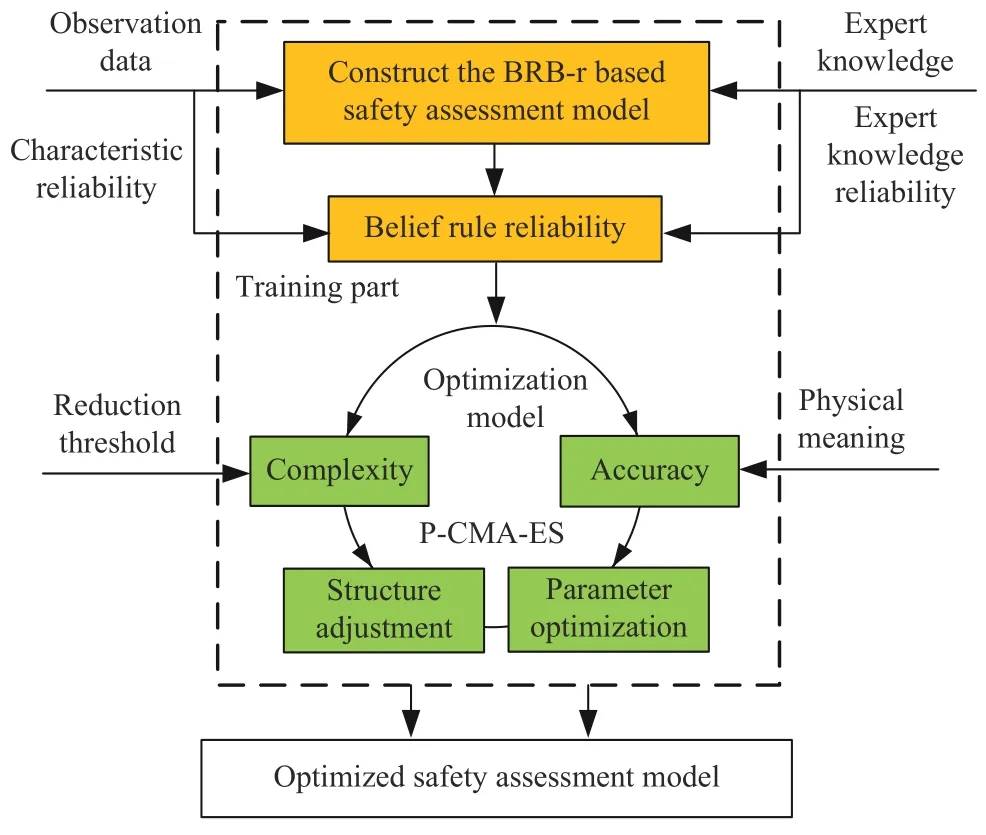
Fig.1.The safety assessment model with both considering model complexity and accuracy.
In the BRB-r based safety assessment model,the reliability of belief rule consists of two parts:the attribute reliability and the expert knowledge reliability.The reliability of belief rule is represented by

The authors in [15] proposed a calculation method of attribute reliability based on the statistical method,where the disturbance factors are assumed to be static and the attribute reliability is a constant.In this paper,assume that the disturbance factors are static.Hence,the attribute reliability is calculated by

whereTis the number of observation data.yirepresents the sum of unreliable observation data that can be eliminated by the fluctuation range.τ is the adjustment coefficient of the fluctuation range and represents the requirement of the complex system.When the observation data is reliable and little noise exists,the observation data can represent the system information andyi,j=1,j=1,2,...,T;otherwise,yi,j=0.Then,.
In the output of belief degree,the global ignorance is the residual belief degree that cannot be distinguished which safety state should be assigned.It is generated because of the influence of expert knowledge and attribute.When the expert knowledge is unreliable,the ability of the constructed belief rule to discriminate the safety states of complex system is decreased.In other words,limited by the ability of experts,the recognition ability of the constructed belief rule is constrained.Thus,the global ignorance in the output of the belief rule can be used to calculate the reliability of expert knowledge [15],[33].Then,the reliability of belief rule can be calculated by

wherer1,r2,...,rMare the comprehensive radiabilities of attributes.(1−βD,k/κ)is the reliability of expert knowledge in thekth belief rule,and κ is the scale factor that represents the influence ratio of attribute uncertainty and unreliability expert knowledge.As shown in the above formula,once the global ignorance βD,kis 0,the unreliability expert knowledge does not influences the belief rule reliability and the reliability of the belief rule is only influenced by the reliability of attributes.
Remark 1:There is need to explain the effectiveness of attribute uncertainty,attribute reliability,expert knowledge uncertainty and expert knowledge reliability.In the BRB-r based safety assessment model,the uncertainty in attribute exists in qualitative knowledge,such as natural language,and it is mainly caused by incomplete information,inconsistent source,inaccurate expression.For the attribute reliability,it represents the influence of the disturbance factors,such as environment noise,and it is the objective aspect of the characteristic.The uncertainty of expert knowledge is the incompleteness,approximation and randomness in the natural language,and it may be influenced by the environment and other factors.In the BRB-r based safety assessment model,the uncertainty of expert knowledge can be addressed by the optimization model based on the gathered observation data.The reliability of expert knowledge represents the expert’s own ability and has nothing to do with external factors.
IV.THE SAFETY ASSESSMENT MODEL BASED ON BRB-R
In this section,a new safety assessment model based on BRB-r with considering belief rule reliability is developed.In the new safety assessment model,its structure is adaptively adjusted based on the belief rule reliability while its estimation accuracy is the optimization goal.So,in this way,the model complexity and accuracy can be both considered.In this section,the modeling process of the constructed safety assessment model based on BRB-r is presented in Section IVA,and then an optimization model is constructed based on the P-CMA-ES algorithm in Section IV-B.In Section IV-C,the modeling process of the developed model for complex system is presented.
A.Inference Process of the New Safety Assessment Model
The reliability of belief rule is determined by the attribute reliability and the expert knowledge reliability,and its calculation method is shown in Section III.Influenced by the unreliability belief rule,the accuracy of the estimated safety state generated by the ER algorithm is decreased.In addition,the BRB-r model is an expert system that complexity is determined by the number of belief rules.Thus,the unreliable belief rule should be eliminated.In general,in the BRB-r based safety assessment model,the unreliable belief rule will not only affect the accuracy of the model output,but also increase the complexity of the model.Thus,the structure and accuracy of the BRB-r based safety assessment model should both be considered and the inference process is presented in this section.
When the observation data is available,due to the different formats of observation data for different characteristics,the observation data of characteristics cannot be aggregated directly.Thus,the observation data should be converted into a uniform format by the following formula [34],[35].

wherexi(k+1)andxikare the reference values of theith characteristic in the (k+1)th and thekth belief rule,respectively.denotes the input of theith characteristic.Lis the numbers of the belief rules in the constructed model.
Based on the frame of the belief rule as shown in (2),the total matching degree of the multiple characteristics can be obtained by the following formulas.
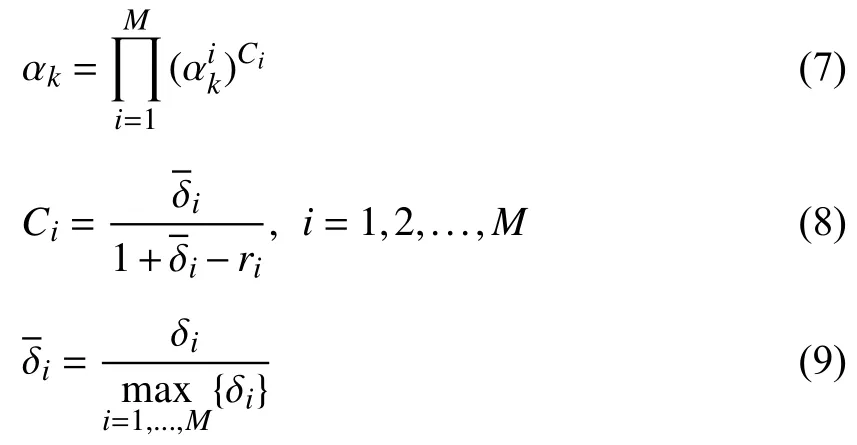
where αkis the matching degree of theMinput characteristics to thekth belief rule.Cidenotes the new weight with considering the weight and reliability of theith attribute.represents the relative weight of theith attribute [15].Note that 0≤≤1.
Once the observation information of system is available,it will activate the belief rules in the safety assessment model and the activation weights can be calculated by

wherewkis the activation weight of thekth belief rule,which is determined by the input of system characteristics.The activation weight represents the effectiveness of the model inputs to the belief rule.θkdenotes the weight of thekth belief rule andLis the number of the belief rule in the BRB-r model.
When the belief rule is unreliable,the estimated output is influenced and it increases the complexity of the safety assessment model.Thus,these belief rules should be eliminated according to the practical system.To adaptively adjust the structure of safety assessment model in the optimization model,the belief rule is reduced based on its reliability by

whereRthresholdis the reduction threshold of the belief rule,and it can be determined by experts according to the model complexity and accuracy requirement.Once the reliability of belief rule cannot meet the requirement,the effectiveness of the belief rule is set to 0 andwk=0.So,in this way,the structure of the constructed safety assessment model can be adjusted.
Then,after the activation weights of the belief rules are calculated,they can be combined by the ER algorithm and its analytic algorithm is shown as

where βnis the belief degree of thenth safety state generated by the developed safety assessment model.Note that+βD=1.βDis the residual belief degree unassigned to any safety state,and it is influenced by the uncertainty of expert knowledge and unreliable expert knowledge.In the new safety assessment model,βDis used to calculate the belief rule reliability.L′is the number of the belief rule that satisfies the reliability requirement.
After the belief degree of each safety state has been obtained,the final safety state of complex system can be calculated by

whereu(Di)is the utility of theith safety levelDi,which is determined by experts according to the safety state of the practical system.denotes the final estimated safety state of the complex system.
Remark 2:In the inference process of the developed safety assessment model,the attribute reliability and the residual belief degree are used to calculate the belief rule reliability.Once the belief rule reliability is lower than the thresholdRthreshold,the weight of the belief rule is set to 0 and it will not influence the final output of the safety assessment model.
B.Optimization Model for the New Safety Assessment Model
The initial safety assessment model is constructed based on the expert knowledge.Due to the complexity of practical system,the experts cannot provide accurate system information and uncertainty exists in the expert knowledge.Moreover,limited by the ability of experts,the expert knowledge may not be fully reliable.So,in this way,the safety assessment model constructed by the expert knowledge cannot estimate the safety state of complex system accurately.Thus,the gathered observation data should be applied to adaptively adjust the structure and parameters according to the practical system,and an optimization model for the new safety assessment model is developed in this subsection.
In the BRB-r based safety assessment model,the optimization parameters consist of attribute weights,belief rule weights and belief degree in output of belief rules.There are two parts in the optimization model:the structure adjustment and parameter optimization.For the structure adjustment of the safety assessment model,once the reliability of belief rule cannot meet the requirement,its weight is set to 0 and its output belief degree is not trained in the optimization model.In addition,the BRB-r model is an expert system whose parameters must have physical meaning.Therefore,it parameters should be trained in constraints.Based on the original physical meaning,the constraints of optimization parameters can be listed as

The mean square error (MSE)between the estimated safety state and actual safety state can represent the accuracy of the safety assessment model,and it can be calculated by the following formula [30].

whereoutputactualis the actual safety state of the complex system,which is determined by experts according to the system mechanism.outputestimateddenotes the estimation output of the safety assessment model and it is calculated by(14).
The optimization goal is to minimize the error between the actual safety state and the estimated safety state by the constructed model.Hence,the optimization model of the safety state assessment model can be profiled as

Remark 3:In the optimization model,the parameters need to be trained and the model structure is adjusted adaptively by the reliability of belief rule simultaneously.It should be noted that when the belief rule reliability is lower than the threshold,the rule weight is set to 0 and its output belief degree is not trained in the training part.That is to say,the belief rule does not work in the constructed safety assessment model.So,in this way,the model structure can be adjusted according to the practical system,and the constructed safety assessment model can address the influence of the unreliable characteristics and the unreliable expert knowledge.Thus,by the optimization process,the accuracy of the optimization model can be improved while its model complexity is decreased.
C.Modeling Process of the New Safety Assessment Model
The modeling process of the new safety assessment model can be concluded by the following steps.
Step 1:Construct the safety assessment model based on BRB-r.Note that the structure and parameters of the initial safety assessment model are both determined by experts.
Step 2:Calculate the reliability of characteristics based on the calculation method presented in Section III,and the reliability reduction threshold of belief rule is determined by experts.
Step 3:Reduce the belief rule based on the attribute reliability and global ignorance in belief rule output.At the same time,the parameters in the residual belief rules are optimized by the training data.
Step 4:Test the optimized safety assessment model by the testing data.Note that in the testing part,the structure of the safety assessment model is not needed to be adjusted adaptively while its parameters of the safety assessment model are not changed.
V.CASE STUDY
To illustrate the effectiveness of the developed model,a case study of safety assessment for liquefied natural gas(LNG)storage tank in Hainan province,China,is conducted.
A.Problem Formulation in Safety Assessment Model for LNG Storage Tank
In this section,the LNG storage tank in Hainan province,China,is selected as the experimental object.The LNG is applied as one of the important energy sources that is increasingly used in China.In Hainan province,two storage tanks have been built by reclaiming land from the sea as shown in Fig.2.In this way,the foundation of the storage tank is unstable,and influenced by the excessive pressure of the storage tank,uneven settlement may occur in the LNG storage tank.Once the storage tank is unevenly settled,it will cause cracks in the storage tank,which will further lead to the LNG leakage and safety accidents.Thus,it is necessary to estimate the safety state accurately [10],[36].

Fig.2.LNG storage tank in Hainan province,China.
In the safety assessment of the LNG storage tank,due to its high cost,a large number of experiments cannot be conducted.Therefore,the number of observation data that can be gathered is small,and an accurate safety assessment model based on the quantitative data cannot be established.Moreover,due to the influence of the disturbance factors in practical environment,noise exists in the gathered observation information,and its reliability is decreased.On the other hand,the LNG storage tank is a typical complex system,where many subsystems exist and they are related to each other.The experts cannot provide accurate information for the storage tank and an analytical model cannot be obtained.So,it is necessary to aggregate the expert knowledge and the gathered observation data to construct the safety assessment model for the LNG storage tank,and the unreliability of the gathered information needs to be solved.When the expert knowledge and the characteristics are unreliable,the reliability of the belief rule is influenced,which further influences the accuracy of the safety assessment model.In addition,the number of belief rule determines the complexity of the safety assessment model.Consequently,to improve the estimation accuracy and decrease the model complexity,in the training part,the belief rule in the rule base should be adjusted by its reliability adaptively according to the actual working environment of the LNG storage tank.Thus,in the experiment,a new safety assessment model for the LNG storage tank is constructed based on the developed model in this paper.
In the experiment,12 monitoring points are installed in the storage tank,and 42 sets of observation data are gathered from 2012 to 2019.Based on the analysis of the structure and location of the storage tank,the first monitoring point (FP)and the seventh monitoring point (SP)are selected by experts as two attributes of the BRB-r model.The observation data of these two attributes are shown in Fig.3.It can be seen from Fig.3 that the LNG storage tank’s settlement is irregular over time and has a large change range.Based on the building deformation measurement specifications (JGJ8-2007),the greater the gap between the two monitoring points is,the lower the safety state of the LNG storage tank is.Hence,the actual safety state of the LNG storage tank is determined by experts at each monitoring point.It should be noted that the actual safety state of the LNG storage tank should also consider its location.

Fig.3.The observation data of FP and SP.
Remark 4:In engineering practice,there are several factors that lead to the LNG storage tank failure,such as the uneven settlement,uneven filling of the insulation material,the failure of the vacuum and the residual gas inside the tank,etc.Based on the investigation in Hainan LNG Company,the uneven settlement should be paid more attention to in the face of other failure factors by the construction mode of the storage tank.So,in this paper,the uneven settlement is selected as the major concern and assume that the other aspects of the storage tank are normal.
B.Construction of the Adaptive Safety Assessment Model for LNG Storage Tank
To solve the above analyzed problems and improve the safety assessment accuracy for the LNG storage tank,in this subsection,an adaptive safety assessment model is constructed based on the developed model.
In the constructed safety assessment model,the first monitoring point and the seventh monitoring point are selected as two attributes,represented byFPandSP,respectively.The safety state of the LNG storage tank is divided into three levels:the high safety state (H),the medium safety state (M)and the low safety state (L).Based on (2),the belief rule in the BRB-r based safety assessment model can be profiled as
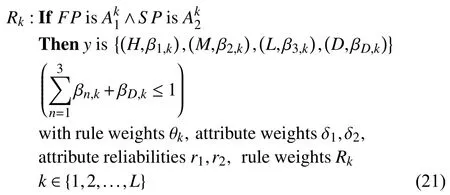
whereyis the estimated safety state of the LNG storage tank.In the training process,once the reliability of thekth belief ruleRkdoes not satisfy the requirement,its rule weight θkis set to 0 and it has no effect in the safety assessment model.
The reference point indicates the degree of division of the characteristics.It should be noted that the number of the reference points determines the complexity and accuracy of the safety assessment model.Thus,in this experiment,five reference points ofFPandSPare selected:low (L),slightly low (SL),medium (M),slightly high (SH),high (H).For the reference values ofFPandSP,they should be determined by experts in accordance with the three principles of uniform distribution,covering the variation range of two characteristics and focusing on the data-intensive area.Thus,combined with the characteristics of the storage tank under different working states,the reference values ofFPandSPare given by experts as shown in Tables I and II.Moreover,three reference points are selected for safety state and their reference values are shown in Table III.
Based on the reference value of both attributes and (21),the parameters in the initial safety assessment model can be given by experts.As shown in Table IV,all the belief rules are assumed to be fully important and two characteristics are assumed to be fully important.In the initial safety assessment model,the expert knowledge is assumed to be fully reliable and the global ignorance of each belief rule is set to 0.

TABLE I REFERENCE POINT AND VALUE OF FP
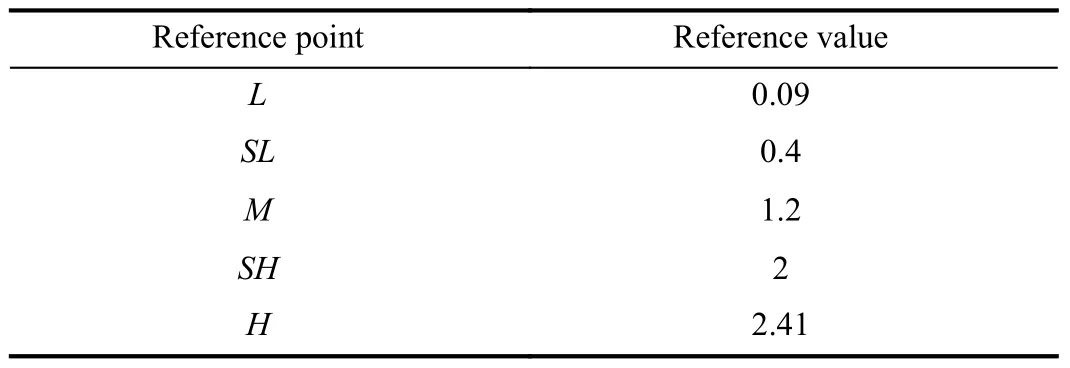
TABLE II REFERENCE POINT AND VALUE OF SP

TABLE III REFERENCE POINT AND VALUE OF THREE SAFETY STATES
C.Training and Testing of the Constructed Safety Assessment Model
In the initial safety assessment model,due to the uncertainty of expert knowledge,its estimation accuracy is influenced.Moreover,as shown in Table IV,there are 25 belief rules in the safety assessment model and 127 parameters exist.However,in the experiment,only 42 sets of observation data have been gathered,which cannot adequately train the model parameters.On the other hand,due to the disturbance factors in actual working environment and the limitation of the expert’s own capabilities,the characteristics and the expert knowledge are not fully reliable.As profiled in (21),once the characteristics and the expert knowledge are unreliable,the reliability of the belief rule in the assessment model is influenced.These unreliable belief rules not only influence the accuracy of the safety assessment model but also increase the model complexity.Thus,these unreliable belief rules should be eliminated.Based on the optimization model developed in Section IV-B,in the training process,the structure of the safety assessment model is adjusted while the parameters are optimized.
In this section,the reduction threshold of the reliability of belief rule is determined by experts andRk=0.3,it is determined by experts according to the estimation accuracy and model complexity.On the basis of the training data and the constructed optimization model,the safety assessment can be optimized as shown in Table V.The estimated output of the new safety assessment model is shown in Fig.4.As shown in Fig.4,the developed model can estimate the safety state of the LNG storage tank accurately,and the MSE of the developed safety assessment model is 0.0509.There are 22 belief rules and 112 parameters in the optimized safety assessment model.The number of the parameters of the optimized model reduces 11.8% and the number of belief rule reduces 12% compared with the initial safety assessment model.Although some observation points cannot be accurately assessed,the error does not exceed half of the actual safety state of the LNG storage tank,which can still provide a reference for decision-making in engineering practice.
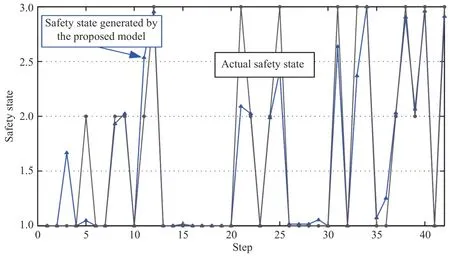
Fig.4.Estimated safety state of the developed model.
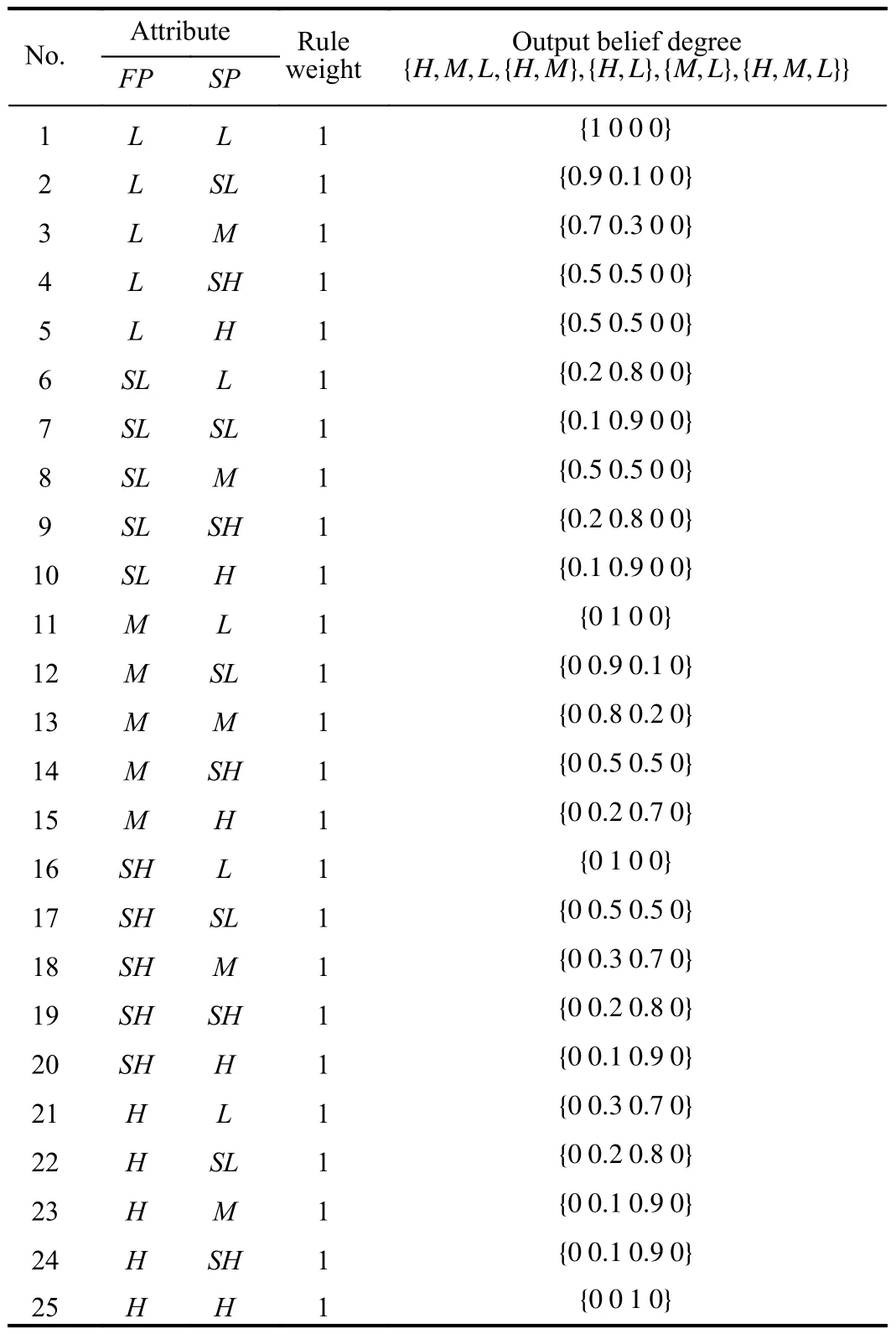
TABLE IV INITIAL BRB-R BASED SAFETY ASSESSMENT MODEL
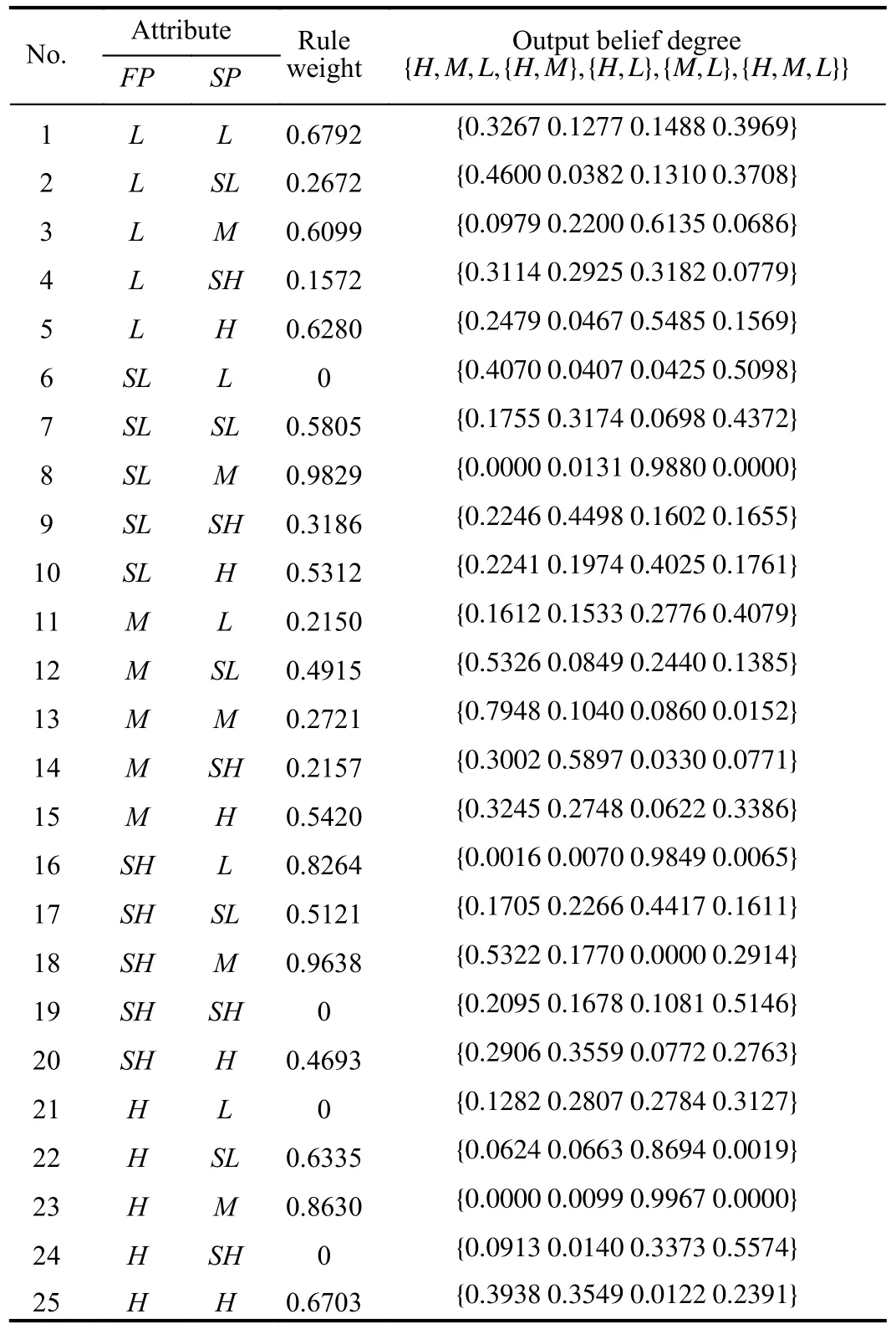
TABLE V OpTIMIzED BRB-R BASED SAFETY ASSESSMENT MODEL

Fig.5.Relationship between reduction threshold of belief rule reliability and number of belief rule.
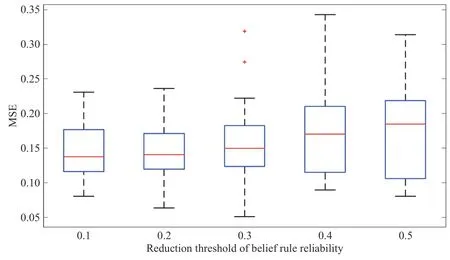
Fig.6.Relationship between MSE of the developed model and reduction threshold of belief rule reliability.

Fig.7.Relationship between error of the developed model and reduction threshold of belief rule reliability.
The complexity of the developed safety assessment model is determined by the number of the belief rules,and there is a direct relationship between the reduction threshold of belief rule reliability and the complexity of the safety assessment model.As shown in Fig.5,when the reduction threshold of the belief rule reliability changes from 0.1 to 1,the amount of belief rule gradually decreases.The experiment is conducted for 40 times.WhenRk>0.3,the number of belief rules quickly decreases,and once the reduction threshold is greater than 0.6,the number of belief rules becomes 0.On the other hand,as the reduction threshold of the belief rule reliability changes,the accuracy of the safety assessment model also changes.As shown in Figs.6 and 7,when the reduction threshold of belief rule reliability changes from 0.1 to 1,the MSE and error of the constructed safety assessment model first decrease and then increase,and whenRk>0.6,the model MSE and error between actual safety state and estimated output become infinite.That is to say,as the reduction threshold increases from 0.1 to 1,the estimation accuracy of the developed model first increases and then decreases,and the best accuracy of the safety assessment model isRk=0.3.Moreover,as the reduction thresholdRkincreases,the distribution range of MSE first decreases and then increases.Thus,the robustness of the safety assessment model first increases and then decreases.Consequently,in this way,we can obtain a conclusion that the reduction threshold of belief rule reliability can influence the complexity and accuracy of the developed safety assessment model.For practical systems,the reduction threshold of the belief rule reliability cannot be greater than 0.5,and 0 To illustrate the effectiveness of the developed safety assessment model in this paper,comparative studies are conducted in this subsection. First,the safety assessment model developed in this paper is constructed based on BRB-r while its structure is adjusted according to the belief rule reliability.In the safety assessment model based on the traditional BRB-r model,its structure is not changed and only the model parameters are trained.Compared with the traditional BRB-r model,the complexity of the proposed safety assessment model in this paper decreases.Moreover,the BRB-r model is one of the expert systems,where the observation data and expert knowledge are aggregated simultaneously.For the LNG storage tank,there are only 42 monitoring data,which is a typical small sample problem,and it is also a complex system.Consequently,in this subsection,comparative studies with the traditional BRBr model,BP neural network and fuzzy inference method are conducted. The MSEs of the developed safety assessment model in this paper,the safety assessment models developed by the traditional BRB-r model,the BP neural network and the fuzzy inference method are shown in Table VI.The MSE of the fuzzy inference method is 0.1160,where the initial rule base is determined by experts and the inputs are the observation data of the two characteristics of the LNG storage tank [12].Moreover,the MSE of the BP neural network is 0.0837,where the training data and the testing data are same as the developed model in this paper,and the number of iterations and learning rate are set to 500 and 0.1,respectively.Therefore,compared with the BP neural network and the fuzzy inference method,the new developed safety model based on BRB-r can aggregate the observation data and expert knowledge,and its estimation accuracy is improved by 56.1%and 39.1%,respectively.The MSE of the safety assessment model based on traditional BRB-r is 0.0722,where the model structure is not changed.Assume that the expert knowledge applied in the two BRB-r models is same.That is to say,the reliability of expert knowledge in the two models is same that can be handled by the new developed model.Compared with the traditional BRB-r model,the accuracy of the proposed model improves 29.5%.Moreover,compared with the safety assessment model developed in this paper,there are 25 belief rules and 127 parameters in the safety assessment model developed by the traditional BRB-r model.The complexity of the new proposed model is decreased and its accuracy is higher than that of the traditional BRB-r model.Thus,the developed model can handle the unreliable observation data and the unreliable expert knowledge better,which is more suitable for modeling practical systems. TABLE VI COMpARATIvE STUDIES In this paper,a new safety assessment model with model structure adaptive adjustment is developed to solve three problems in engineering practice:lack of observation data,high system complexity and environment interference factors.To deal with the influence of the unreliable belief rule to the model accuracy and complexity,a new calculation method of belief rule reliability is proposed,where the reliability of system characteristics and the reliability of expert knowledge are both considered.In the optimization model of the developed safety assessment model,its structure is adjusted adaptively while the model parameters are optimized.In this way,the new belief rule base with attribute reliability (BRB-r)based safety assessment model can be adjusted according to the practical system. There are three innovations in this paper.Firstly,for practical system,to solve the lack of observation data,high complexity of system and complex environment interference factors,a new safety assessment model based on BRB-r is developed.Secondly,limited by the ability of the experts and influenced by the unreliable observation data,the belief rules in the constructed safety assessment model may not be fully reliable.These unreliable belief rules cannot estimate the safety state of complex system,but increase the complexity of the safety assessment model.Therefore,a new calculation method of belief rule is developed to reduce the model structure.Lastly,to consider both the model accuracy and complexity,an optimization model is constructed to adaptively adjust the model structure based on belief rule reliability and optimize the model parameters. In the case study for the LNG storage tank in Hainan province,China,only the uneven settlement is considered and we assume that the storage tank is not affected by other factors,such as uneven filling of the insulation material.In practical system,these failure causes should be considered simultaneously.Moreover,in this paper,the developed BRB-r based safety assessment model is a general method.Some specific problems in other areas,such as traffic control,need to be further studied and the BRB-r based safety assessment model should also be adjusted according to the subject.These challenges need to be solved in future works.D.Comparative Studies

VI.CONCLUSION
杂志排行
IEEE/CAA Journal of Automatica Sinica的其它文章
- Decentralized Resilient H∞ Load Frequency Control for Cyber-Physical Power Systems Under DoS Attacks
- Adaptive Consensus of Non-Strict Feedback Switched Multi-Agent Systems With Input Saturations
- A Novel Product Remaining Useful Life Prediction Approach Considering Fault Effects
- Enhanced Intrusion Detection System for an EH IoT Architecture Using a Cooperative UAV Relay and Friendly UAV Jammer
- Data-Driven Heuristic Assisted Memetic Algorithm for Efficient Inter-Satellite Link Scheduling in the BeiDou Navigation Satellite System
- Static Force-Based Modeling and Parameter Estimation for a Deformable Link Composed of Passive Spherical Joints With Preload Forces
